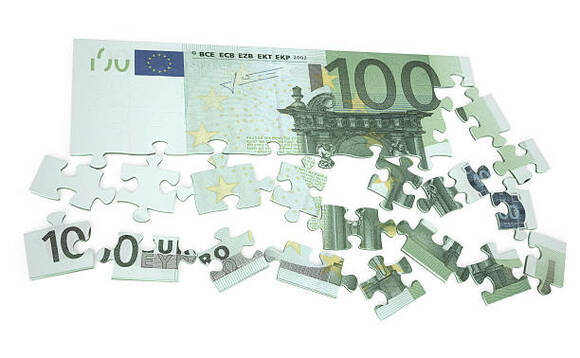Within the asset class real estate, it is hard to imagine that there are so-called blind spots in developed markets, such as the German speaking countries, notably Germany, says Henryk Seeger, managing director, GNIW.
Still, when it comes to the market segment equity release for single family homes, it is an underdeveloped market offering huge upside potential: More than seven million Germans, aged 65 years and older, live in their homes. Overall, the number of Germans in this age-cohort, has risen over the last two decades from 12 million to 18.4 million persons, which corresponds to about 22% of the total population.
In contrast to other Western European countries, Germany's overall population is reaching an all-time-high. Germany's net immigration has been positive in the three decades since reunification reaching its highest growth rate since 1950 in the past year.
All this contributes to a fundamentally intact upwards momentum in the market for single- and two-family homes: According to the Federal Statistical Office, the prices in this segment nationwide have increased by about 84 per cent between 2010 and 2021. Broadly compared, rents per square meter are about 20 percent higher as compared to rental apartments.
Substantial market size
There were 16.1 million single-family homes in Germany in 2021, according to the German data aggregator Statista. Per square meter, the average price per square meter is around 2.736 euros and the average home size is about 135 square meters, based on figures from realtor site immoverkauf24. This results in a purely mathematical average sales price of 370,000 euros per single-family home and a potential market of six trillion euros. If only one million single-family homes were to come onto the market, this would correspond to a volume of 370 billion euros.
Yet the market is still in an early stage of development and foreign investors frequently wonder why. Especially compared to the UK and US Germany´s market for single-family homes still seems somewhat untouched by investors.
Given the fact that the British equity release market has doubled in size since 2017, fuelled by an ageing population the above-mentioned figures for Germany underpin the strong market fundamentals for this investment case.
Track record established
There is not a single reason for this seeming conundrum. For German homeowners and the investing public in general, the concept of equity release to unlock capital tied up in their single-family homes is rather new. Our conversations with prospects frequently reveal reluctance to embrace its benefits.
Germans during their working life are less mobile. Especially as compared to employees in North America and the United Kingdom, they are frequently rooted to their regional background. Moreover, they often tend to be emotionally attached to their home which represents most of their lifetime's savings. In their minds, a single real estate transaction instead of subsequent acquisitions and disposals of their home-base represents an anchor they are reluctant to touch at all.
Furthermore, potential sellers in their mid-sixties are not yet digital natives and, broadly speaking, reluctant to embrace innovations, including new financial concepts. As we overcome their initially sceptical view, we learn about the financial needs of a generation that increasingly faces liquidity constraints to maintain their standard of living.
In this context, we see our ongoing efforts in investor education paying off. Step by step, German homeowners are beginning to understand the benefits of equity release products.
The topic is more widely discussed, both in the local and national media on digital channels, broadcast as well as in print outlets. By now, more and more companies offering equity-release-schemes are building up impressive track-records and trying to accelerate their growth, thus tapping into international capital.
Zoning restrictions provide upside for further asset appreciation
In addition to its size, the German market for equity release also shows several other characteristics that are important to bear in mind from an institutional investor's perspective.
Firstly, the quality of single-family-homes. Over many decades, local craftsmanship in connection with existing standards and building regulations have created a stock of single-family homes across the country with high quality, often with a lifetime of well over 100 years.
Secondly, first-generation homeowners after reunification who are about to retire have invested in their homes with great zeal. As Germany lacks one central hub and boasts at least seven major metropolitan areas on a national level, the quality of homes is evenly distributed in many regions.
Affluent areas with a vast stock of single-family homes are to be found in A, B and C areas across all 16 German states, according to our own proprietary rating model.
Thirdly, zoning restrictions and environmental concerns going hand in hand with lack of newly designated building lots provide upside for further asset appreciation in many municipalities where demand for single family homes is expected to vastly exceed supply for many years to come, according to the above-mentioned demographic patterns as well as our own estimates.
More than one way to enter the market
From an institutional investor's perspective, there is more than one way to enter this market. Based on our recent pace of acquisitions, we consider ourselves to be the largest landlord of single-family homes in Germany by now. We have created several managed funds which are a way to bundle single family homes. On the other hand, ongoing discussions with investors underpin their interest in considering equity options as an alternative to participate in future growth.
By Henryk Seeger, managing director, GNIW Gesellschaft für nachhaltige Immobilienwirtschaft.





